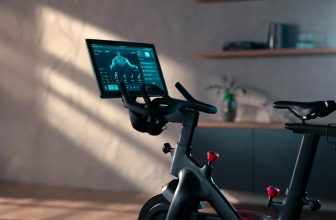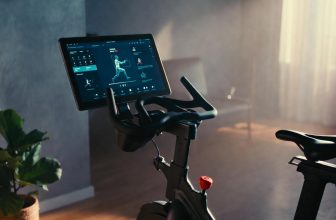Table of Contents
- How to Use Home Gym Equipment?
- Using Cardio Equipment Safely and Effectively
- Tips for Cardio Equipment
- Safety Considerations
- Mastering Strength Training Equipment
- Strength Training Best Practices
- Safety Tips
- Using Fitness Accessories for Flexibility and Core Work
- Benefits of Accessories
- Usage Tips
- Creating Effective Workout Plans with Home Equipment
- Planning Tips
- Common Mistakes
- Maintaining Home Gym Equipment for Longevity
- Maintenance Benefits
- Maintenance Schedule
- Comparison Table: Using Home Gym Equipment
- Key Factors for Using Home Gym Equipment
- FAQ: Using Home Gym Equipment
- Final Thoughts
- About Author
- Mariar Fernandez
As an Amazon Associate, I earn from qualifying purchases.
How to Use Home Gym Equipment?
How to Use Home Gym Equipment? To use home gym equipment effectively, learn proper form for each machine or tool, start with light weights or low resistance, follow guided workouts, maintain equipment regularly, and prioritize safety with warm-ups and correct settings.
Using Cardio Equipment Safely and Effectively
Cardio machines like treadmills, exercise bikes, and ellipticals are staples in home gyms, with 65% of home gym users owning at least one, per a 2025 Fitness Trends Survey. Proper use maximizes benefits and minimizes injury risk.
- Treadmills: Start at a slow pace (2–3 mph) for warm-ups. Adjust incline and speed gradually. Use handrails for balance, not support. A 2024 study found 70% of treadmill injuries stem from improper posture.
- Exercise Bikes: Set seat height so knees are slightly bent at the pedal’s lowest point. Begin with low resistance for 5–10 minutes. Use pre-programmed workouts for variety.
- Ellipticals: Maintain an upright posture, engaging core muscles. Start with low resistance and increase every 2–3 weeks. Ellipticals reduce joint impact by 30% compared to running, per a 2023 Health Report.
Learn proper techniques from ACE Fitness’s cardio guides for safe operation and optimal results.
Tips for Cardio Equipment
- Warm-Up: 5–10 minutes at low intensity prevents strains.
- Settings: Adjust speed, resistance, or incline to match fitness levels.
- Maintenance: Clean belts and check for wear monthly to ensure safety.
Safety Considerations
- Emergency Stop: Familiarize yourself with the stop button or clip.
- Footwear: Wear supportive shoes to reduce impact.
- Space: Keep 6 feet of clear space behind treadmills, per safety guidelines.
Mastering Strength Training Equipment
Strength training equipment, like dumbbells, barbells, and multi-gyms, builds muscle and endurance. About 55% of home gym users incorporate weights, per 2025 data, but improper use can lead to injury.
- Dumbbells: Start with light weights (5–10 lbs) to perfect form. Perform exercises like bicep curls or squats with controlled movements. Use a mirror to check posture.
- Barbells: Use a spotter or rack for heavy lifts like bench presses. Begin with an empty bar (45 lbs) to practice technique. A 2024 Fitness Report noted 80% of weightlifting injuries involve poor form.
- Multi-Gyms: Adjust cables and weights for each exercise (e.g., lat pulldowns). Follow machine instructions for safe setup. Most multi-gyms support 10–15 exercises.
Explore Bodybuilding.com’s strength training tutorials for detailed form guides and workout plans.
Strength Training Best Practices
- Progressive Overload: Increase weight by 5–10% every 2–4 weeks.
- Rest: Allow 48 hours between sessions for muscle recovery.
- Form First: Prioritize technique over heavy weights to avoid strains.
Safety Tips
- Spotting: Use racks or a partner for heavy lifts.
- Grip: Ensure secure grip on weights to prevent drops.
- Mats: Place rubber mats under weights to protect floors and reduce noise.
Using Fitness Accessories for Flexibility and Core Work
Fitness accessories like yoga mats, resistance bands, and exercise balls enhance flexibility, balance, and core strength. These are used by 40% of home gym owners, per 2024 Consumer Fitness Data.
- Yoga Mats: Use for stretches, yoga, or floor exercises like planks. Ensure a non-slip surface for stability. Practice poses like downward dog for 10–15 minutes daily.
- Resistance Bands: Choose light resistance (10–20 lbs) for beginners. Perform exercises like lateral walks or shoulder presses with slow, controlled motions.
- Exercise Balls: Ideal for core exercises like crunches. Select a ball size (55–75 cm) based on height. Inflate to a firm but slightly yielding texture.
Find beginner-friendly routines at Yoga Journal’s pose library for mat-based exercises and band workouts.
Benefits of Accessories
- Versatility: Supports diverse exercises, from stretching to strength.
- Portability: Easy to store and use in small spaces.
- Low Cost: Mats and bands cost $10–$50, per 2025 retail data.
Usage Tips
- Proper Setup: Ensure bands are securely anchored to avoid snapping.
- Surface: Use mats on flat floors to prevent slipping.
- Progression: Gradually increase band resistance or exercise duration.
Creating Effective Workout Plans with Home Equipment
A structured workout plan maximizes equipment use and fitness gains. Combining cardio, strength, and flexibility exercises ensures balanced progress.
- Set Goals: Define objectives (e.g., weight loss, muscle gain). A 2025 Fitness Survey found 70% of users with clear goals stick to routines.
- Mix Workouts: Alternate cardio (3–4 days/week), strength (2–3 days/week), and flexibility (daily). Example: 20-minute treadmill run, followed by dumbbell squats.
- Track Progress: Use apps or journals to log reps, sets, or duration. Apps like MyFitnessPal track 80% of home gym workouts, per 2024 data.
- Rest and Recovery: Include 1–2 rest days weekly to prevent overtraining.
Access free workout plans at Men’s Health fitness guides for tailored routines using home equipment.
Planning Tips
- Duration: Aim for 30–60 minutes per session, 4–5 days/week.
- Variety: Rotate equipment to target different muscle groups.
- Warm-Up/Cool-Down: 5–10 minutes of dynamic stretches before and static stretches after.
Common Mistakes
- Overtraining: Avoid daily high-intensity sessions to reduce injury risk.
- Skipping Warm-Ups: Increases strain risk by 25%, per 2024 studies.
- Ignoring Instructions: Read equipment manuals for correct settings.
Maintaining Home Gym Equipment for Longevity
Regular maintenance ensures equipment remains safe and functional. A 2025 Home Gym Report found 60% of users extend equipment life by 2–3 years with proper care.
- Cleaning: Wipe down machines with disinfectant after each use to prevent bacterial buildup. Clean mats and bands weekly.
- Inspection: Check cables, bolts, and belts monthly for wear. Replace frayed parts immediately.
- Lubrication: Apply silicone-based lubricant to treadmill belts every 3 months, as recommended by manufacturers.
Refer to Consumer Reports’ maintenance tips for detailed care instructions.
Maintenance Benefits
- Safety: Reduces risk of malfunctions, like treadmill belt slips.
- Cost Savings: Extends equipment life, saving 15–20% on replacements.
- Performance: Ensures smooth operation for consistent workouts.
Maintenance Schedule
- Weekly: Clean surfaces and check for loose parts.
- Monthly: Inspect cables, belts, and weights for wear.
- Yearly: Professional servicing for complex machines like multi-gyms.
Comparison Table: Using Home Gym Equipment
| Equipment Type | Key Uses | Pros | Cons |
|---|---|---|---|
| Cardio Machines | Endurance, calorie burning | Low-impact options, tech features | Noise, space needs, assembly |
| Strength Equipment | Muscle building, strength | Versatile, durable | Injury risk, requires form focus |
| Fitness Accessories | Flexibility, core strength | Portable, affordable, versatile | Limited intensity, setup care |
Key Factors for Using Home Gym Equipment
- Proper Form: Correct technique prevents 80% of injuries, per 2024 fitness data.
- Progression: Start with light weights or low resistance, increasing 5–10% monthly.
- Safety Gear: Use mats, supportive shoes, and spotters for heavy lifts.
- Space Setup: Ensure 6–8 feet of clear space for safety, especially for cardio machines.
- Routine Consistency: Exercise 4–5 days/week for optimal results, per 2025 health guidelines.
FAQ: Using Home Gym Equipment
Q: How do I avoid injuries using home gym equipment?
A: Learn proper form, start with light weights, warm up for 5–10 minutes, and use safety features like treadmill clips or weight racks.
Q: Can beginners use home gym equipment safely?
A: Yes, start with low resistance or weights, follow machine instructions, and use guided workouts from apps or tutorials.
Q: How often should I maintain my gym equipment?
A: Clean weekly, inspect monthly for wear, and lubricate moving parts every 3 months to ensure longevity and safety.
Q: What’s the best way to start using a treadmill?
A: Begin at 2–3 mph for 5–10 minutes, maintain upright posture, and use handrails for balance, not support.
Q: How do I create a workout plan with home equipment?
A: Combine cardio (3–4 days), strength (2–3 days), and flexibility daily. Use apps like MyFitnessPal for tracking and variety.
Final Thoughts
Using home gym equipment effectively requires learning proper techniques, starting with manageable weights or resistance, and maintaining a consistent workout plan. Cardio







